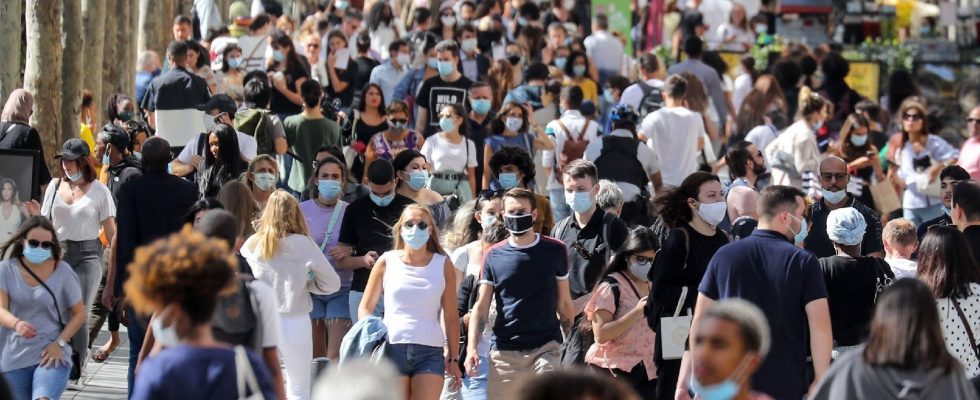Three years after the start of the epidemic, answers to our questions are still emerging. On December 20, 2023, a British study, published in the journal Nature, provided new data regarding the risk of transmission of Sars-CoV-2. Researchers from the Pandemic Sciences Institute (PSI) at the University of Oxford combed through data from 7 million users of the NHS Covid-19 app, between April 2021 and February 2022. In total, these are 23 million hours of exposure to the virus and 240,000 positive tests that were taken into account. Objective: estimate the risks of transmission based on proximity, duration and contagiousness calculated by the application.
First observation: it is estimated that 40% of the people analyzed contracted Covid-19 from a household contact, while these only represent 6% of the contacts recorded in the application. Duration of exposure to infected people was found to be the most important determinant of transmission risk, with fleeting contacts (less than 30 minutes) accounting for half of reported contacts but very few transmissions. Conclusion: the duration of exposure to a person infected with Covid-19 increases the risk of being infected more than proximity to this same person.
Lead analyst Dr. Luca Ferretti, a researcher at PSI, noted that “many infections result from prolonged exposure. The risk of infection continues to increase with each hour spent in close proximity.” While it is widely known that moving closer to people with Covid-19 and spending more time around them increases the risk of catching the virus – but this is the first large-scale study to reveal how much measurement and how these two factors act together.
A valuable study for the future
This study could prove useful in the event of a new epidemic. This is explained by Professor Christophe Fraser, principal investigator of the study and professor of epidemiology of infectious diseases on the PSI website : “These results show how good data could be used during a future outbreak to inform social distancing precautions. In the case of Covid-19, this could have led to a greater emphasis on duration of contact as a risk of transmission.”
After the Covid-19 pandemic, researchers made a point of understanding how viruses spread, in order to improve our tools to combat them. “In the future, it is possible that the methods and technology used in this study could provide us with much better evidence than we have had so far to determine the best response in the early stages of the next pandemic,” added Professor Steven Riley, director general of data and surveillance at the British Health Security Agency (UKHSA), who collaborated with the University of Oxford.
However, the study should be taken with caution since it has certain limitations. First of all, the sample of people is undoubtedly not representative of reality, since they all have the application and therefore are more likely to respect public health recommendations. In addition, individuals had to self-declare their Covid-19 status, a step that some might well have omitted. Finally, some users of the application may no longer have used it after a positive test, due to a feeling of failure.
Previous studies from the same team at the University of Oxford and UKHSA estimated the impact of the NHS COVID-19 contact tracing app on the pandemic in England and Wales. Their conclusion: the application would have saved 10,000 lives during its first year.
